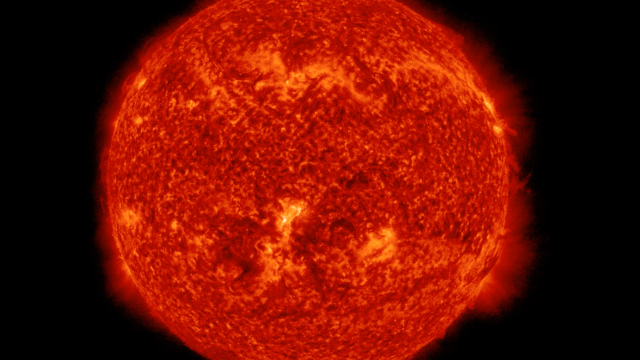The Sun just hurled debris from a dead sunspot toward Earth, and the superheated material is supposed to arrive at our planet on Thursday (don’t worry — you won’t feel it).
On Monday, an old and dying sunspot dubbed AR2987 exploded, sending a mass ejection of material from the Sun into space, Space Weather reported. That material may cause a geomagnetic storm when it reaches Earth.
Sunspots are dark spots marking the Sun’s surface. They are the result of the magnetic field inhibiting the transfer of energy on the surface of the Sun through a process known as convection, where hot fluid rises and cooler fluid sinks. These spots can last anywhere from a couple of hours to a few months.
This particular sunspot’s explosion caused the release of huge amounts of energy in the form of radiation, as well as large expulsions of plasma and magnetic field from the outermost layer of the Sun’s atmosphere which is known as a coronal mass ejection (CME). These eruptions are essentially giant bubbles of gas and magnetic flux carrying up to a billion tons of charged particles, travelling at speeds of several million miles per hour.
The CME is expected to reach Earth on April 14, according to predictions made by the National Oceanic and Atmospheric Administration. The impact with Earth’s atmosphere could trigger a G-2 geomagnetic storm. Storms are rated from G-1 to G-5, so a G-2 level storm is considered fairly moderate. The geomagnetic storm could potentially cause some minor disruptions to power grids or orbiting satellites, in addition to auroras that may be visible at lower latitudes than usual.
The charged particles within the CME interact with gases in the atmosphere along the North and South Poles, creating more intense displays of the Northern and Southern Lights. The Sun is currently experiencing increased activity as part of this solar cycle, which began in December 2019. Every 11 years, the Sun begins a new solar cycle, marked by periods of violent eruptions and flashes of intense radiation that shoot out into space. The current solar cycle is expected to peak by the year 2025. Scientists still haven’t fully figured out how to better predict these space weather events erupting from the Sun, especially the ones that are aimed in Earth’s direction.
Several satellites are currently keeping a close watch on our host star, namely the joint NASA and European Space Agency’s Solar and Heliospheric Observatory and the Parker Solar Probe, which is on a mission to “touch the Sun” or get as close as 9.86 solar radii from its centre by the year 2025.
